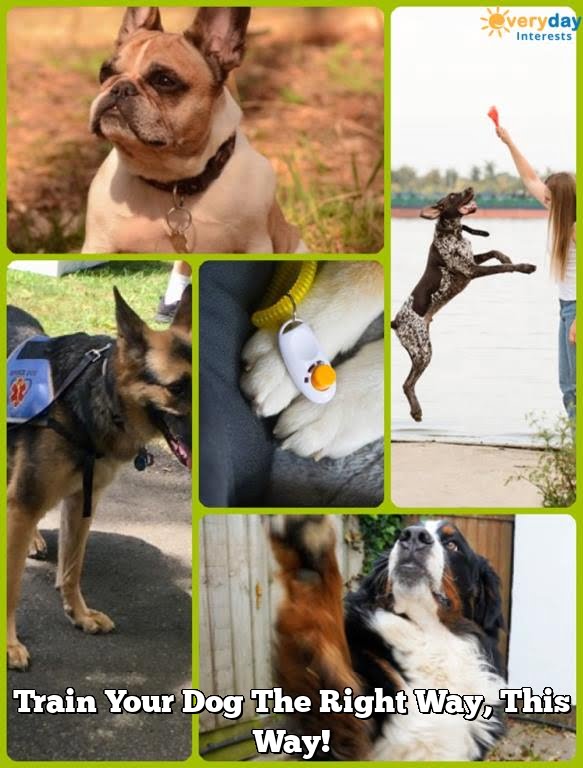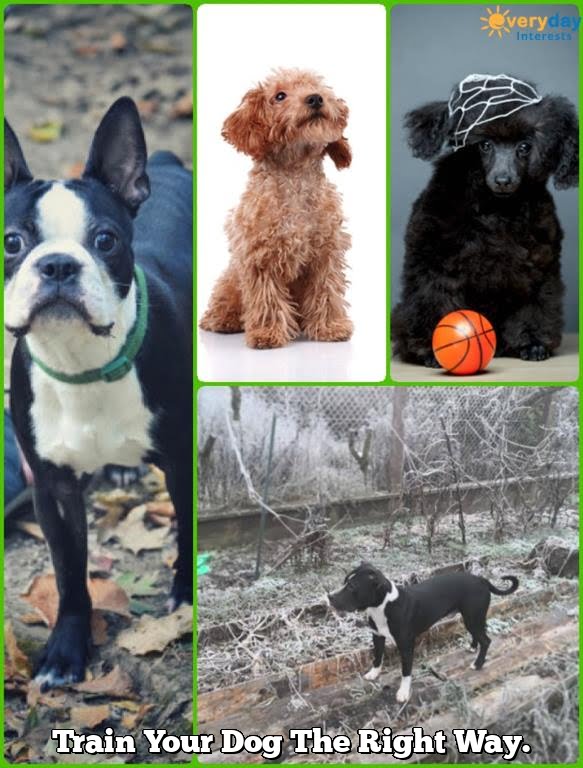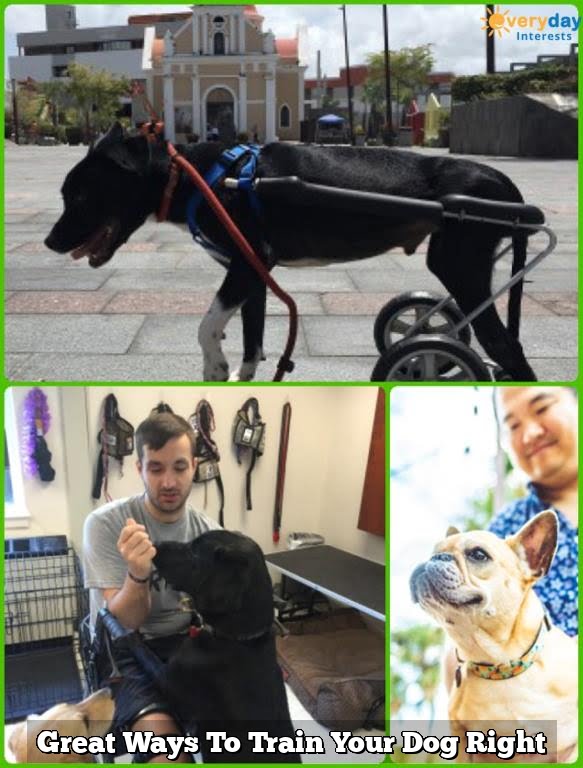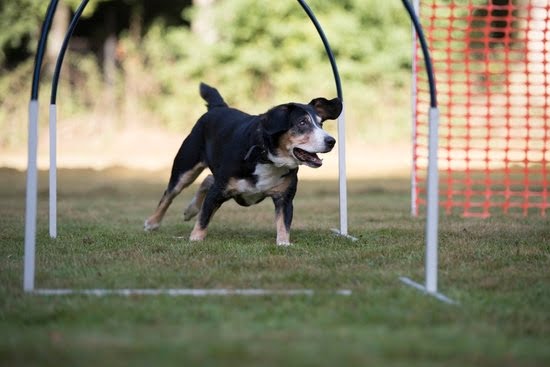Are you wondering how to train a dog to potty right away? Potty training is an essential aspect of owning a dog, as it helps to ensure a clean and hygienic living environment for both your pet and your family. In this article, we will explore the importance of potty training for dogs and provide valuable tips for successful training.
Potty training is not only about teaching your dog where to eliminate, but it also promotes good behavior and strengthens the bond between you and your pet. With the right approach and consistency, you can effectively train your dog to potty in the appropriate area.
In the following sections, we will delve into various aspects of potty training, including creating a designated potty area, establishing a routine for potty breaks, using positive reinforcement techniques, understanding your dog’s signaling patterns, handling setbacks, considering breed-specific needs, maintaining consistency in training, and utilizing additional tools and resources for effective training. So let’s get started on this important journey towards successful potty training for your beloved furry friend.
Creating a Designated Potty Area for Your Dog
Choosing the Right Spot
When creating a designated potty area for your dog, it’s important to choose the right spot in your yard or living space. Look for an area that is easily accessible to your dog and away from high-traffic areas. It’s also a good idea to choose an area with a different texture, such as grass or gravel, so your dog can distinguish the potty area from the rest of the space.
Introducing Your Dog to the Designated Area
Once you have chosen the designated potty area, it’s time to introduce your dog to this spot. Take your dog to the potty area frequently, especially after meals, playtime, and naps. Use a consistent command, such as “go potty,” to signal to your dog what is expected of them in this area. If they do their business in the designated spot, be sure to offer praise and rewards to reinforce this behavior.
Using Boundary Markers
To help your dog understand where their potty area begins and ends, consider using boundary markers such as fence posts or small garden borders. These visual cues can help guide your dog to the correct spot and reduce confusion about where they should go potty. Over time, these markers can become a helpful aid in training your dog to potty right away in their designated area.
By following these tips and tricks for creating a designated potty area for your dog, you can set them up for success in their potty training journey. Remember that patience and consistency are key when training a dog to use a specific area for pottying. With dedication and positive reinforcement, you can train your furry friend to use their designated spot every time they need to go.
Establishing a Routine for Your Dog’s Potty Breaks
Set Regular Potty Break Times
Dogs generally need to go potty after waking up, after playing, after eating, and before bedtime. By taking your dog outside at these specific times every day, you can help them understand when it’s time to go potty. Be sure to also take them out at regular intervals throughout the day, so they get into the habit of going outside rather than indoors.
Create a Potty Area
Designate a specific area in your yard or take your dog to the same spot each time they need to go potty. This helps them recognize that particular spot as their bathroom area and can make it easier for them to do their business right away.
Stay Patient and Consistent
It’s important to be patient with your dog as they learn their new routine. If accidents happen, remain calm and continue with the scheduled potty breaks. Consistency is key in reinforcing the routine, so stick with it even if there are setbacks along the way.
By following these tips and establishing a routine for your dog’s potty breaks, you can effectively train them to potty right away and minimize accidents indoors. Remember that each dog is different, so it may take some time and patience before they fully grasp their new bathroom schedule.
Using Positive Reinforcement
Positive reinforcement is a crucial aspect of successful potty training for dogs. By using positive reinforcement, you can effectively communicate to your dog what behavior is desirable and encourage them to repeat it. Here are some tips on how to use positive reinforcement to train your dog to potty right away:
1. Treats: When your dog successfully goes potty in the designated area, immediately reward them with their favorite treat. This will create a positive association between going potty in the right place and receiving a reward.
2. Praise: Along with offering treats, make sure to shower your dog with praise and affection when they do their business in the designated potty area. Use an enthusiastic tone of voice and lots of pets and cuddles to reinforce their good behavior.
3. Consistency: It’s important to be consistent with your positive reinforcement efforts. Every time your dog goes potty in the right place, provide treats and praise. Consistency will help solidify the connection between the desired behavior and the rewards.
Additionally, it’s important to avoid punishing your dog for accidents or mistakes during the potty training process. Punishment can create fear and anxiety in your dog, making it harder for them to understand what behavior is expected of them.
By using positive reinforcement techniques like treats, praise, and consistency, you can effectively train your dog to potty right away in the designated area. Remember that every dog is different, so it may take some trial and error to find the most effective method for your furry friend.
Understanding the Signs That Your Dog Needs to Go Potty
Training your dog to potty right away involves understanding the signs that they need to go. While every dog is different, there are some common indicators that can help you recognize when it’s time for a potty break. One of the most obvious signs is when your dog starts sniffing the ground and circling around a particular area. This behavior often indicates that they are looking for a spot to relieve themselves.
Another sign to look out for is if your dog suddenly becomes restless or starts pacing back and forth. Whining, barking, or scratching at the door are also classic signals that your dog needs to go outside. Some other subtle indications include excessive sniffing, sudden changes in behavior, or heading towards their designated potty area. By being attentive and observant of these signs, you can learn how to train a dog to potty right away more effectively.
It’s important to note that puppies may not always exhibit clear signs when they need to go potty, so it’s essential to take them out frequently and supervise them closely. Over time, as you become more familiar with your dog’s individual cues, you will be better equipped to anticipate when they need a bathroom break and react accordingly. Recognizing these signs is crucial in preventing accidents indoors and reinforcing good habits during potty training.
Dealing With Accidents
Accidents are a normal part of the potty training process for dogs, so it’s important to know how to handle setbacks when they inevitably occur. Here are some tips on how to effectively deal with accidents and continue making progress in your dog’s potty training journey:
1. Stay calm and patient: When accidents happen, it’s crucial to remain calm and avoid getting frustrated with your dog. Reacting negatively can cause anxiety in your pet and hinder their progress. Instead, clean up the mess calmly and continue with the training process.
2. Reinforce positive behavior: After an accident occurs, take the opportunity to reinforce positive potty behavior with your dog. If you catch them in the act of going potty in their designated area, praise them and offer a treat as positive reinforcement.
3. Reassess your approach: If accidents become a frequent occurrence, it may be time to reassess your training approach. Consider whether there are any factors contributing to the setbacks, such as changes in routine or environment. Adjusting your strategy accordingly can help address any issues and get back on track with successful potty training.
It’s important to remember that setbacks are normal during the potty training process, especially for young or newly adopted dogs. With patience, consistency, and positive reinforcement, you can effectively handle accidents and continue working towards successful potty training for your furry companion.
Tips for Training Different Breeds
Potty training isn’t a one-size-fits-all approach, especially when it comes to different dog breeds. Small and large dogs have unique needs and considerations when it comes to potty training. Here are some tips for effectively training your small or large dog to potty right away.
1. Size Matters: When it comes to potty training, the size of your dog matters. Smaller dogs have smaller bladders and may need more frequent potty breaks compared to larger dogs. Understanding the specific needs of your dog’s breed and size can help you create a successful potty training routine.
2. Proper Timing: Small dogs may need to go potty more frequently, so be prepared to take them out more often. On the other hand, large dogs may need longer walks and more exercise, which can also impact their potty schedule. Knowing the optimal timing for your dog’s potty breaks is essential for successful training.
3. Tailoring Your Approach: Different breeds have different temperaments and behaviors, which can also influence their potty training needs. For example, some small breeds are known for being stubborn, while certain large breeds may be more independent. Understanding these breed-specific traits can help you tailor your training approach for better results.
By understanding the unique needs of small versus large dogs when it comes to potty training, you can create a tailored approach that sets your furry friend up for success.
| Small Dogs | Large Dogs |
|---|---|
| Smaller bladders | Require longer walks/exercise |
| More frequent potty breaks | Tailor the timing of potty breaks accordingly |
| Breed-specific temperament considerations | Tailor approach based on independence level |
Consistency Is Key
One of the most important factors in successful potty training for your dog is consistency. Consistency helps your dog understand what is expected of them and reinforces good behavior. It’s important to establish a consistent schedule for potty breaks, feeding times, and even playtime. When it comes to potty training, consistency means taking your dog out to their designated potty area at the same times every day and praising them when they do their business.
Consistency also extends to how you react to accidents. If your dog has an accident inside the house, it’s crucial to remain calm and not scold or punish them. Instead, clean up the mess thoroughly without drawing attention to it. Reacting with anger or frustration can confuse your dog and make it harder for them to understand where they should be going potty.
Another aspect of consistency in potty training is using the same verbal cues and commands each time you take your dog out. By using phrases like “go potty” or “do your business” consistently, your dog will come to associate those words with the action of going potty. This can help them understand what is expected of them more quickly.
When maintaining consistency in potty training, it’s important to remember that every dog is different and may require different approaches or timelines for success. Additionally, some dogs may face setbacks in their training due to various factors such as changes in routine or environment. Remaining patient and consistent throughout these challenges will ultimately lead to success in potty training.
| Consistency in Potty Training | Maintaining a Successful Routine |
|---|---|
| Establish a consistent schedule for potty breaks | Remain calm when accidents happen |
| Use consistent verbal cues and commands | Be patient during setbacks in training |
Additional Tools and Resources for Effective Potty Training
Potty training a dog requires more than just establishing a routine and using positive reinforcement. Additional tools and resources can play a crucial role in effectively teaching your furry friend where to do their business. One popular tool for potty training is the use of crates.
Crates can be a valuable aid in potty training by providing a confined space for your dog when you are unable to supervise them closely. Dogs naturally avoid soiling their living spaces, so when used correctly, crates can help encourage your dog to hold their bladder and only go potty outside.
Puppy pads are another helpful resource for potty training dogs, especially for those who live in apartments or have limited access to outdoor areas. Puppy pads are absorbent pads that are placed on the floor to provide an indoor bathroom option for dogs.
When using puppy pads, it’s important to gradually transition your dog from using the pads indoors to going outside as they become more accustomed to the desired potty area. This gradual transition will help prevent confusion and accidents as your dog learns where they should be doing their business.
In addition to crates and puppy pads, there are other resources that can aid in potty training such as enzymatic cleaners for accidents, which help eliminate odors that may attract dogs back to the same spot, and training bells that can be used to teach your dog how to signal when they need to go outside.
It’s important to remember that every dog is different, so finding the right combination of tools and resources that work best for your pet may take some trial and error.
By being patient and consistent with your chosen methods, you can help ensure successful potty training for your furry companion.
Conclusion
In conclusion, potty training is an essential part of ensuring a harmonious and clean environment for both you and your furry friend. By following the tips and tricks outlined in this article, you can create a designated potty area for your dog, establish a routine for potty breaks, use positive reinforcement, understand the signs that your dog needs to go potty, and deal with accidents effectively.
Consistency is key in maintaining a successful potty training regimen for your dog, regardless of their breed or size.
By celebrating every success and being patient through setbacks, you can help your dog become proficient at pottying right away. Remember that every dog is different, so it’s important to tailor your approach to their specific needs and behaviors. Whether you choose to use crates, puppy pads or other resources in your training journey, always keep in mind the ultimate goal: a well-trained dog who knows how to handle their business appropriately.
Training a dog to potty right away may have its challenges, but it is achievable with the right approach and dedication. Keep in mind that ongoing success requires patience and understanding from both you and your pet. With time, effort, and plenty of positive reinforcement, you’ll be able to enjoy the rewards of a well-potty trained dog.
Frequently Asked Questions
How Do I Get My Dog to Go Potty Right Away?
To get your dog to go potty right away, you can try using a consistent word or phrase to associate with the act of going outside. Taking your dog to the same spot each time and giving lots of praise when they do go can also help.
How Long Does It Usually Take to Potty Train a Dog?
The time it takes to potty train a dog can vary depending on the breed, age, and individual personality of the dog. Typically, it can take anywhere from a few weeks to several months for a dog to be fully potty trained.
How Do You Train a Dog to Tell You It Has to Pee?
Training a dog to tell you when it needs to pee involves paying close attention to their behavior and body language. Some signs that a dog may need to go include pacing, whining, sniffing around, or suddenly stopping playing. By recognizing these cues and immediately taking them outside, you can reinforce their communication about needing to pee.

Welcome to the blog! I am a professional dog trainer and have been working with dogs for many years. In this blog, I will be discussing various topics related to dog training, including tips, tricks, and advice. I hope you find this information helpful and informative. Thanks for reading!





